#sah sultan daughter of selim ii
Text
Power and status of ottoman princess
Title and honorifics
Before the rule of sultan Bayazid II every high ranking woman were called Hatuns,including mother,sisters,aunts and daughters, however thier social standing was naturally higher than non imperial women. The way to adrress them was Hatun that was used after their given name,for example, Gevherhan hatun,daughter of Mehmed the coqueror or effendi that would have similar meaning as mistress.
After accession of Bayazid II his daughters and granddaughters were given title of sultan,however non of his living sisters or aunts got the honor. Later on proper way to adress them woulf become “Sultanim”, which would mean “my sultan”,or again “effendim” by other members of imperial family. I would like to underline that contrary to what wikipedia states, there is no records that I know,where princesses where called with “Devletlu İsmetlu” like Valide sultan and Haseki sultan were.
The term “sultana” that was made more feminine by Europeans never existed in ottoman language.
Family, Marrige and Issues
I want to start discussing their family with brothers,it’s widely known fact that before suleyman there was “once concubine,one son” tradition therefore if shehzade/Sultan had full-sisters they were all older,that is one way to deduce if princess of unspecified mother was full sister of half sister of reigning sultan. Naturally Shezades had closer relationship to their full sisters as they were leaving with him and their mother,when he was appointed as governor of princely province. Their latter life would be spent in their brother’s harem before marriage.
being half sister of sultan did not automatically mean that their relationship would have been stained,however mostly,princess would favour full-brother over half,but were treated by same respect regardless who ascended the throne. It was different case when imperial princess had no full brother at all,for example Sah Huban, she had very close relationship with Suleyman,even closer than his deeply respected full sisters.
Their marriages,much like any other princesses of any country, was political,arranged by their parents to strengthen standing of their father or brother,for example daughters of Selim I were firstly married to powerful politicians,so their father would have supporters in his rebellion,while their second marriages were arranged to help Suleyman in his early reign. Their husbands were usually much older than them, therefore marital life was likely not consensual and in no way their choice. For example,Rustem paha,husband of Mihrimah,was same age as Hurrem,her daughter’s fate was even worse as she had to marry peer of her own grandfather,however given the fact that they had 8 children,marriage can be considered successful. After the Marriage princesses were getting their own little “Harrem”,where they had great rooms for themselves and their servants,where even their Husbands needed permission to enter and even refuse to have sexual intercourse with them,sometimes their marriage could end unconsumated and after some time princess could use another of their privilege-divorce. Reason of divorce could have been different: Personal attitude,mistreatment,political move or adultery. It was made clear,especially by Suleyman,that imperial princesses were full-fledged members of imperial family so they ranked higher than their husbands,therefore having relationship with other women was their humiliation,which would lead to divorce, after which they would retire in old palace and could refuse to remarry again.
Only their first degree descendants would be given imperial titles.
Daughters- Hanimsultan(with Ayse Humashah as exception)
Sons-Sultanzades. They ranked even below non-sultan imperial consorts and some of the highest ranking harem servants.
Hierarchy and Power
They actually had equal standing in ottoman hierarchy. As female members of dynasty they had the same status and privileges,were reffered as sultans and often received relative stipend.( Which was on average 200 akche a day, for comparison, Valide sultan had around 2000-3000 depended on time period, Haseki sultan 1000-1100(Hurrem as only exception,who got stipend of Valide sultan ) Gulfem,who was almost regarded as member of family herself was recieving 150, Nurbanu’s trusted friend and one of the highest ranking non-sultan woman ever Canfeda received 200, Mahidevran only received 40 and avarage stipend of cariye was 2-4) Besides, sisters of sultans were technically daughters of sultan, though the deceased one, still they were treated with great respect much like their late father. However, birth order was important thing in ottoman society so younger sister respected older and bowed to them as well as nieces bowing to aunts regardles of their martial or fianacal status. Therefore saughters of sultan,as nieces, were calling sisters of sultan,as aunts, “effendi" out of respect.
In conclusion, even if they had same social standing, sisters of sultan were still bit ahead daughters of sultan formally.
However, Granddaughters, Nieces and cousins of sultan,despite the same rank, were less prestigious.
Despite their relative social status and order of birth their actual power was dependent on several factors:
1. Their relationship with Padishah,Valide sultan or Haseki sultan. They had higher rank and much more evident political power, they still needed their permissions about major decisions,even if it were their right, so being on good terms with them was a good move. Half-sisters naturally were not as favoured as full-sisters by Valide sultan,but with padisah had more options, they could have been supportive, religious, charitable and obedient another way was sending beautiful, well-educated concubines,who could have become Haseki(after 1533), that is when their good relationship begun,most of Sultanate of women memebers were raised at their court and remained in favour after they became Valide Sultans, in that case even some of the Padisah’s expressed gratitude and gratefulness for raising their mother, (such occasion was Ahmed I’s attitude towards her aunt which I will discuss below.), they could also donate money to wars, harem managements and charitable projects, either all their own or assist Haseki sultan.
2. The second way to gain power was wealth. Money opens many doors and it was like that in the past. They could establish some business or even receive bribes.
3. They could also gain power with marriages, it was not only beneficial for their brothers,but for them as well. If their husband had a high rank, they could keep an eye on the political situation and act accordingly, they would use that influence to assist their brothers, who,In turn, would be extremely grateful for their support.
Comparison between Ottoman and European princess
Status- Status of European princesses depended on their marriage. Being princes was not guaranteed power,but only a formal status. For example, Margaret Tudor was below prince Henry in rank but when she married by proxy to Scottish king, she outranked him and demonstrated that by walking in front of him. On the other hand, another sister Mary married to Charles Brandon and was Duchess of Suffolk ever since,while Status of Imperial princess remained the same.
Opportunity- European princesses could have become Queen consort and Queen mother and veiled immense power, while imperial princesses could never become Haseki or Valide.
Marriage- Ottoman princesses were usually older when married and outranked their husbands,while European princesses were always below their husbands. Sultan could also refuse remarryin,while European princesses had no such right
Freedom-European princesses were less limited by social customs.
Consummation-Ottoman princesses had the right to refuse Consummation without a deadline, while European princesses had to Consummate marriage even if they were twelve, unless of course parents arranged it other way.
Divorce - it was right of ottoman princesses to divorce their husbands,while for European princesses it was a rare privilege.
Despite so many differences, one thing was same- they had a loveless purely political match .
Powerful ottoman princesses
Here I Rank ottoman princesses,who had considerable power and influence, sorted by date of birth.
P.S gifs are from MC and MC:K,but some characters might represent different historical figures.

Fatma sultan
Fatma may have been the second child of Ayşe Hafsa and Selim I . She was born in Trabzon around 1492 and spent her childhood there. When her younger brother Süleyman received his own princely province in 1509, she probably accomponied him to Caffa with their mother.
She was married in 1516 for the first time,but it soon ended in divorce and Fatma returned to Manisa. She gained considerable influence as she was most likely the sister,who was recorded to be in Manisa, helping mother manage harem and protect Suleyman from their father. If legends are true and Selim was indeed trying to kill Suleyman,that she had hands in saving him. Most likely, Fatma and her mother were instructing young sukeyman,how not to deserve the wrath of father and covering his mistakes. After Suleyman ascended the throne, she was married again to Kara Ahmed pasha in 1522. Marriage lasted long,but did not produce any child, so either fatma was infertile (Kara Ahmed pasha had two daughters that are disputed to be fatmas,but they were likely from previous marriage) or the match was not happy and Fatma refused sexual intercourse, however considering her reaction to his death, it was most likely the former.
According to what we have Fatma seems to be quite free spirited as depicted in the series. She was wealthy, cunning and might have been fond of parties. She had hands in financing some of her brother’s campaigns and even won the favour of janissrries. However, in 1555 Kara Ahmed pasha was executed by the efforts of Mihrimah and Hurrem and Fatma was married to eunuch and banished from the capital for hed intrigues against them She died either in 1557 or 1573.

Sah huban sultan
Daughter of Selim I and unknown concubine, born in 1500. As she has no full brothers, she was very close to Suleyman and their father, with whom she spent most of her childhood. Considering Suleyman’s great respect for her, Sah was likely a supporter of him and helped to deal with Selim I.
She was married in 1523 to well-educated and intelligent Lutfi pasha with whom she shared religious thoughts and beliefs. Marriage, however did not seem to be successful the couple only had one daughter and Sah refused to have a sexual relationship ever since. She was very pious, intelligent,outspoken and fierce in nature. In the only description of her daughter Esmahan Burnaz, it is said that she was arrogant and demanding and it was Shah’s domineering attitude in the family that was blamed for it, as by this “she had ruined the role of woman” in the child’s mind. However,that was recorded by the European ambassador only, who had never met any of them and probably heard some rumors or made it up after an ugly end of their marriage.
In 1541, Lutfi pasha punished a prostitute for adultery by mutilating her genitals.Şah could not tolerate the humiliation and mutilation of a woman without a word, which is why she got into an argument with her husband, who hit her . Şah had Lutfi pasha beaten up and immediately asked his brother to allow the divorce. Süleyman then exiled him. Şah remained with her brother in Istanbul for the rest of her life and supported the wife of Süleyman, Hürrem, in carrying out her construction projects. She lived a modest life in the Old Palace and devoted all her time to charity and religion. Shah had excellent relationship with Hurrem and Mihrimah and in my opinion, close bond between aunt and niece helped young sultan to shape her mind and characteristics.
She died in 1572 and was buried in her father’s complex.

Mihrimah Sultan(1522-1576)
Her life is very much known. She was the most powerful imperial princess in the empire, so I will just list some of her achievements:
1. Her stipend was 600 akches a day during the reign of three different Sultans. it was three times as much as regular pirncess
2. She had correspondence with Catherine de Medici and other foreigner diplomats, who would often send her gifts to help them in some political affairs.
3. She financed some of Suleyman’s campaigns all her own
4. She built a whole fleet of 400 ships.
5. She had three palaces and two mosques
6. She served as sole de facto Valide from 1558 to 1566 and shared it with Nurbanu from 1566 to 1574.
7. After the death of Bayazid Mihrimah banned everyone from laughing and sent back clothes to Suleyman and Selim who were secretly planning a grandiose wedding, that was cancelled by Mihrimah and instead a very plain ceremony was held.
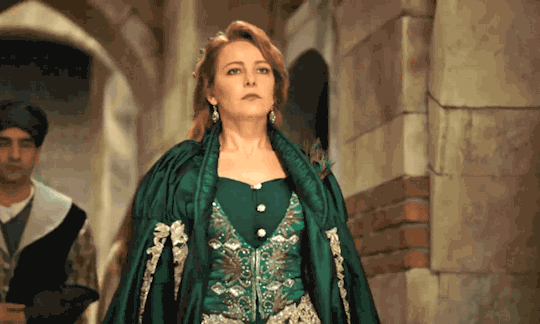
Humasah 1543-c.1582 or later
She was a posthanous daughter of Shehzade Mehmed and despite being only a daughter of prince, she was given the same privileges,but greater power, as any other sultans. She was one of two favourite grandchildren of Hurrem and Suleyman. She married three times,but the source of her power was a good relationship with Sultans. She was the one who raised Safiye and gifted her to Murad, so her power reached it’s peak during his reign.
She financed many construction projects,but was buried in a mosque that was built by Hurrem and Suleyman for her father.

Ayse Humasah 1543-1594.
Daughter of Mihrimah sultan and Rustem pasha, she was practically the same as her cousin with whom she shared many things started from date of birth and ended with their name. Ayse Humasah was the only woman born to an ottoman princess,who was herself addressed as sultan and her children were considered members of the dynasty. She was married two times and her influence was extremely great during the reign of three Sultans. Her power reached it’s peak, when her husband was appointed a grand Vizier and she had hands in very major political decision.

Gevherhan Sultan. 1544-after 1526.
Eldest child of Nurbanu and Selim. She was married to Piyale Pasha, an admiral who died in 1578 and she was remarried in 1579. She was one who raised Handan and gifted it to the prince, for which not only Handan was grateful, but her son Ahmed as well, who after his accession gifted very expensive furs to Handan, Gevherhan and Safiye. The second gifts were given to Handan and Gevherhan only,which indicates that unlike Safiye,she never fell from his favour. Peak of her power was from 1598 during her husband’s grand vazirate. She did a lot of charity in her life.
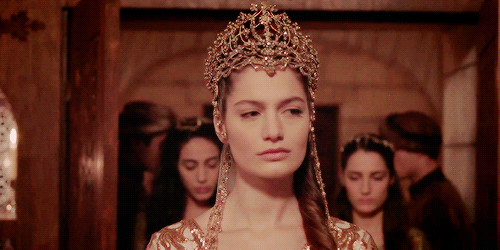
Ismahan sultan 1545-1585
Daughter of Selim and Nurbanu,she was married to Sokollu Mehmed Pasha and Through her husband and her own rank, Esmehan was the most influential sultana of the empire for years. In wealth, only her aunt, Mihrimah, could overtake her, but in influence, almost no one could. She constructed several projects and had foreign diplomatic affairs, most notable her correspondence with Catherine de Medici. She had a very artistic and dramatic personality, often throwing parties and shows. She was recorded to be very much alike Hurrem,both of them were short, not conventionally beautiful,but very intelligent. She was heavily involving herself in politics with her mother.
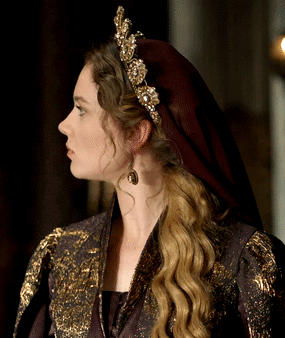
Burnaz Atike Sultan
Sultan Atike was born in 1614 or 1615 and although some sources consider her to be the daughter of Kösem, she was certainly not her child. That can be supported by the fact that she supported Turhan’s rebellion and had a good relationship even after kosem was killed. She was one who raised Turhan and remained in friendly terms for both Turhan’s gratitude and their shared politican views. Atike was noted to love children very much,but had none on her own, so she was involved in raising her nephew,who regarded her as second mother and listened to every of her advice.
She died around 1570.
I hope you liked it, I think it’s unfair to only talk about Mihrimah,while there were so many powerful and intelligent Princesses. I did not talk about Esma sultan as she was in later centuries and I am not fond of her times.
Which ottoman princesses are you favourites?
If i accedentaly missed something out you can ask it in comments
#historical drama#period drama#history#sultanas#valide sultan#medieval women#nurbanu sultan#hurrem sultan#mihrimah sultan#safiye sultan#kosem sultan#turhan sultan#magnificent century#magnificent century kosem#mc: kosem#sultanate of women#sultan suleyman#haseki hurrem sultan#ottoman history#ottomanladies#ottoman empire#15th century#16th century#17th century
112 notes
·
View notes
Photo









Ottoman Princesses named: Şâh
Şâh is a word descending from Old Persian, meaning king. It was the title used by emperors and kings of Iran but also by the rulers of the Ottoman Empire, of the Mughal Empire, of the Bengal Sultanate and of Afghanistan. In the Ottoman Empire it was sometimes used as names for princesses, both alone and in composites, and for princes as well.
#history#historyedit#ottoman history#hundi sultan daughter of bayezid ii#sah sultan daughter of bayezid ii#sahzade sultan daughter of bayezid ii#sahihuban sultan daughter of selim i#sah sultan daughter of sehzade mustafa#sah sultan daughter of selim ii#sah sultan daughter of mehmed iii#sah sultan daughter of mustafa iii#ottomanladiesedit#princessesnames
260 notes
·
View notes
Photo






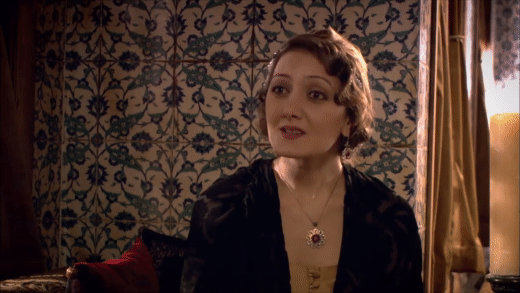
Sisters in Muhtesem Yuzyil
Row 1: Fatma Sultan and Sah Huban Sultan
Row 2: Esmahan Sultan, Gevherhan Sultan and Sah Sultan
Row 3: Hatice Sultan and Beyhan Sultan
#Sister#Sisters#muhtesem yuzyil#magnificent century#fatma sultan#sah huban sultan#hatice sultan#beyhan sultan#sah sultan#gevherhan sultan#esmahan sultan#historical drama#historical tv#historical characters#historical sisters#period drama#period dramas#daughters of selim I#Daughters of Selim II#sultana#born sultana#born sultanas#born sultans
26 notes
·
View notes
Text
Sultanate of Women (3/7)
Nurbanu Sultan (c.1525/ 7 December 1583)

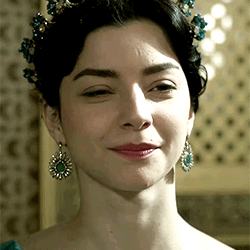
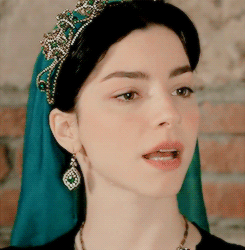
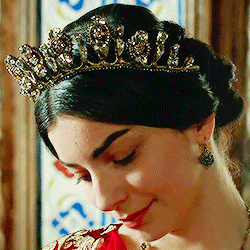
Daughter of Nicolo Venier and Violanta Baffo
Haseki Sultan (Legal Wife) of Sultan Selim II and Valide Sultan of Sultan Murad III
Mother of Sultan Murad III, Sah Sultan, Ismihan Sultan, Gevherhan Sultan, and Fatma Sultan
Grandmother of Sultan Mehmed III, Sehzade Mahmud, Sehzade Mustafa, Sehzade Oman, Sehzade Bayezid, Sehzade Selim, Sehzade Cihangir, Sehzade Abdullah, Sehzade Ahmed, Sehzade Yakub, Sehzade Alemsah, Sehzade Yusuf, Sehzade Hüseyin, Sehzade Korkud, Sehzade Ali, Sehzade Ishak, Sehzade Alaeddin, Sehzade Davud, Sehzade Suleiman, Sehzade Yahya, Hümasah Sultan, Ayse Sultan, Fatma Sultan, Mihrimah Sultan, Rukiye Sultan, Mihriban Sultan, and Fahriye Sultan.
Mother-in-law of Çakırcıbaşı Hasan Pasha, Zal Mahmud Pasha, Sokullu Mehmed Pasha, Kalaylıkoz Ali Pasha, Safiye Sultan, Piyale Pasha, Cerrah Mehmed Pasha, and Kanijeli Siyavuş Pasha
Fun Fact For Newbies: Nurbanu Sultan was born Cecilia Venier-Baffo
45 notes
·
View notes
Photo






Legal Wives in Magnificent Century: Haseki Afife Nurbanu Valide Sultan
Born Cecilia Venier-Baffo in Paros, Republic of Venice; daughter of Niccolo Venier and Violanta Baffo. She was the legal wife of Sehzade Selim (later Sultan Selim II) and Haseki of the Ottoman Empire, and mother of Sehzade Murad (later Sultan Murad III), Esmahan Sultan, Sah Sultan and Gevherhan Sultan. Also was the first slave to be Valide Sultan of the Ottoman Empire.
#lwinmc#Nurbanu Sultan#magnificent century#perioddramaedit#muhteşem yüzyıl#muhtesem yuzyil#mcedit#magnificentedit#my gifs
208 notes
·
View notes
Photo






𝐭𝐡𝐞 𝐠𝐫𝐚𝐧𝐝𝐝𝐚𝐮𝐠𝐡𝐭𝐞𝐫𝐬 𝐨𝐟 𝐒𝐮𝐥𝐞𝐲𝐦𝐚𝐧 𝐭𝐡𝐞 𝐌𝐚𝐠𝐧𝐢𝐟𝐢𝐜𝐞𝐧𝐭
#history#historyedit#ottoman history#suleyman i#nergissah sultan daughter of sehzade mustafa#ayse humasah sultan#humasah sultan daughter of sehzade mehmed#ismihan sultan daughter of selim ii#gevherhan sultan daughter of selim ii#sah sultan daughter of selim ii#mihrimah sultan daughter of sehzade bayezid#hatice sultan daughter of sehzade bayezid#sah sultan daughter of sehzade mustafa#ayse sultan daughter of sehzade bayezid#hanzade sultan daughter of sehzade bayezid#fatma sultan daughter of selim ii#ottomanladiesedit
258 notes
·
View notes
Note
Do jnow something about the descendants of Nurbanu daughters?
Hi, I have done some research and I even tried to make a family tree of them but when uploaded on tumblr you can’t read anything sigh.
We’ll consider Nurbanu’s daughters to have been Ismihan, Gevherhan and Şah Sultan.
Ismihan Sultan
with Dâmâd Sokollu Mehmed Paşa:
Safiyye Hanim-Sultan (1562? ?): she married Sokollu-zâde Silâhdâr Câ'fer Paşa and had two posthumous children with him, twins Mehmed and Cafer Bey.
Sultân-zâde Sokollu-zâde İbrâhîm Hân/Paşa (1565 – 1622?): head of the İbrâhîm Hân-zadeler dynasty, whose descendants are still alive. I’m not listing them all (because they’re a lot) but at the end of the XIX century, Abdülhâdî Hikmet Bey (d. 1882)’s grandson, Abdülbâqî Ihsân Bey, married a granddaughter of Mehmed V, Rukiye Sultan. With her, he had a daughter: Behiyye Emel Nûr-i Cihân Hanım-Sultân (b. 1925), who may still be alive. The princess has/d three children: Banu Hodo (b. 1952), Bala Hodo (b. 1955) and Nazim Hodo (b. 1958). Another grandson of Abdülhâdî Hikmet Bey, called Abdülhâdî Hikmet Bey too, had four sons who may still be alive: Abdülkerim Cevdet Bey, Osmân Bey, Mehmed Orhân Bey and Mehmed Isfendiyâr Bey.
Gevherhan Sultan
with Dâmâd Piyâle Pâşâ:
Ayşe Â’tike Hanım-Sultân (1563 ?) = Doğancıbaşı Fülân Ağa — descendants unknown
X Hanım-Sultân = Sinanpaşaoğlu Mehmed Paşa — descendants unknown
I don’t know if these are two daughters or the same daughter who remarried. I only know that the nameless princess married Sinanpaşaoğlu Mehmed Paşa in 1598, when Gevherhan’s second husband was Grand Vizier.
with Dâmâd Cerrah Mehmed Paşa:
Hatice Hanım-Sultân = Ibrahim Paşa — descendants unknown
Sultanzade Salih Bey — descendants unknown
I wasn’t able to find who this Ibrahim Paşa is, unfortunately.
Şah Sultan
with Dâmâd Zal Mahmûd Pâşâ:
X Hanım-Sultân = Abdal Hân, governor of Bitlis. The two had two sons: Zıyâüddîn Hân (1655-1656) and Celâlüddîn Şeref Hân VI (1657-1670), who became governor of Bitlis after his father's death. From him descends Bedrhân Paşa (1802-1867), whose son Abdürrahmân Bey married Azım-zâde Selwâ Hanım. From the Azım-zâde family descends the historian Öztuna himself.
Sultân-zâde Köse Husrev Paşa — descendants unknown
#anon#ask post#ask: ottoman history#nurbanu sultan#ismihan sultan daughter of selim ii#gevherhan sultan daughter of selim ii#sah sultan daughter of selim ii#Anonymous
19 notes
·
View notes
Note
Why did they (i don’t know who, but I think all people/her father/her mother) choose esmehan to marry a high rank, Sokollu Mehmed? Why not a Sah (the first daughter of Selim)?
because we don’t actually know the order of birth of Nurbanu’s daughters. Şah, Gevherhan and İsmihan is the order that Peirce gives in The Imperial Harem unfortunately without source (though she has a date for each of them: "Şah Sultan and Gevherhan Sultan were born in 951 (1544/1545), Ismihan Sultan in 952 (1545), and Murad in 953 (1546)."). Kumrular, who writes in 2017, takes this claim as fact in her book about Nurbanu and Safiye (Haremde Taht Kuranlar: Nurbanu ve Safiye Sultan), though she hints at Uluçay's claim that Gevherhan was only "maybe" Nurbanu's daughter, but for some reason dismisses Peirce's claim that Fatma Sultan cannot be Nurbanu's daughter because she was born after she had left Selim's harem to go with Murad. I mean if you cite The Imperial Harem for the first three daughters, you should also talk about Fatma's dubious parentage. This last part kind of troubled me because she clearly states that we don't know in which year Fatma was born but... we do?? It’s 1559?? I always end up confused whenever I read her works.
Anyway, back to your actual question.
It was Süleyman I that decided Şah's, Gevherhan's and İsmihan's husbands in 1562. I guess it was his way to prepare everything in view of Selim's accession. If it's true that only Ismihan is Nurbanu's daughter, as Peirce claims in Empress of the East ("The mother of one, Nurbanu, would go on to become Selim’s favorite consort and mother of his first son, Murad."), then it would explain why she was selected as Sokollu's husband. Ismihan was the full-blooded sister of Selim's heir, after all.
Also, Stephen Gerlach says that Ismihan was "short and ugly, but very smart", which is something quite weird to say as usually everyone calls royals beautiful even if they weren't. The Venetian ambassador Barbaro, for example, said that Ismihan was "young and beautiful". If Gerlach's description is the most faithful one, we can't even say that she was chosen because particularly beautiful.
So, really, there is no answer as to why Ismihan was chosen for Sokollu, arguably the most successful statesman of the three grooms, but it also seems to be a question that no historian has ever posed themselves, so maybe there is no hidden meaning behind it at all.
#anon#ask post#ask: ottoman history#nurbanu sultan#ismihan sultan daughter of selim ii#gevherhan sultan daughter of selim ii#sah sultan daughter of selim ii#Anonymous
12 notes
·
View notes
Photo
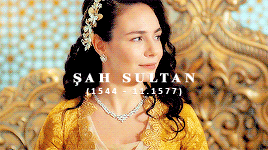

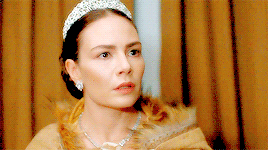

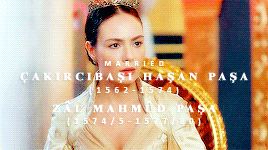


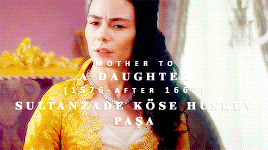
𝐨𝐧 𝐭𝐡𝐢𝐬 𝐝𝐚𝐲 𝐢𝐧 𝐎𝐭𝐭𝐨𝐦𝐚𝐧 𝐡𝐢𝐬𝐭𝐨𝐫𝐲, 𝐒𝐚𝐡 𝐒𝐮𝐥𝐭𝐚𝐧 𝐝𝐢𝐞𝐝:
Şah Sultan was born in 1544 in the Ottoman province of Konya to Prince Selim (later Selim II) and his consort later wife Nurbanu Sultan. According to some sources, she was the eldest of their children.
Şah, together with her full-blooded sisters Gevherhan and Ismihan, got married in 1562 on her grandfather Suleyman's wishes to Çakırcıbaşı Haşan Ağa (later Paşa and kubbe vizier). The couple had no issue. Haşan Paşa died in 1574 and Şah married Zâl Mahmûd Paşa in what it seems to have been a love match and the princess' choice. The two had an unnamed daughter, who later married one Abdâl Hân, and Sultânzâde Köse Husrev Paşa, who died fighting the Safavids.
According to Ibrahim Pecevi, Şah Sultan and Zâl Mahmûd Paşa fell sick on the same day and died together in their bed, only 12 days between them. They were buried in the mosque they had built, the Zâl Mahmûd Paşa Camii. // Hazal Filiz Küçükköse and Acelya Devrim Yilhan as Şah
#history#historyedit#ottoman history#sah sultan daughter of selim ii#on this day in ottoman history#ottomanladiesedit
414 notes
·
View notes
Note
Hi! :) First of all I love your blog sooo much and I'm extremly glad for the boogshelf you made, because it made my work also easier! Now I would like to ask you about Nurbanu's daughters. Leslie Peirce in her book The imperial harem says Şah, Esmehan and Gevherhan were all the daughters of Nurbanu, but in her other book Empress of the East she suggests that maybe only Esmehan was hers. What do you know about it? What do you think all the 3 girls were hers? Thanks for the answer
Hi, thank you so much! I actually should update my bookshelf but I haven't had the time to do it so far. It's on my to-do list though.
So, I have thought about this a lot these past few days. When I first read Empress of the East I simply dismissed her claim that only Ismihan was Nurbanu's daughter without even thinking about why she said that (also: why didn't she address that she first thought that Nurbanu was mother to three daughters but then changed her mind? I want to know). For those who are reading this ask but have not read the book or do not remember, here is the quote:
Roxelana then went on to spend the month of April with Selim in Manisa. Both she and Cihangir were doubtless delighted to meet the three daughters who had been born to the prince in his first year as governor in Anatolia. The mother of one, Nurbanu, would go on to become Selim’s favorite consort and mother of his first son, Murad. — Peirce, Leslie. Empress of the East: How a European Slave Girl Became Queen of the Ottoman Empire
This is what she had said in The Imperial Harem:
If Selim had more than one sexual partner as prince, however, measures must have been taken to ensure that only Nurbanu would bear children. The fact that she gave birth in rapid succession to four children-three daughters (Şah, Gevherhan, and Ismihan) followed by Murad in 1546-and and then produced no other sons, suggests that Selim's goal was to produce his heir by this particular concubine.
As I said I first dismissed the new claim but your ask made me think about this and... she may be right in Empress in the East, after all.
If we look at Ismihan's life and Şah's and Gevherhan's, they are quite different: first of all, Ismihan married a future Grand Vizier and - if it's true that she was the youngest of the three - then it is quite unusual for the youngest to contract the most prestigious marriage. If, on the other hand, only Ismihan was Nurbanu's daughter, then it makes sense for her to be married off to a prominent stateman. This is not to say that Şah's and Gevherhan's husbands were not prominent, but Ismihan's was more and - most importantly - had helped secure Selim's succession on the throne. Sokollu was not just one vizier of Suleyman's, he was already quite known and famous by the end of his reign. In fact, he was appointed Grand Vizier by Suleyman and not by Selim so... why choose him for Selim's youngest daughter and not the eldest?
Also, Ismihan was described by people as not beautiful at all so it's not like that Sokollu had chosen the most beautiful princess or Suleyman had decided to give him the most beautiful among his granddaughters.
It is quite strange if you think about it.
Also [2], during the reign of Murad III, it's always Ismihan who works with Nurbanu: she helped her (and Mihrimah) write to Catherine de' Medici to ask the release of Turkish women and she again helped her detach Murad from Safiye.
Why weren't Şah and Gevherhan involved in this family effort? Maybe because they were just half-sisters and therefore not in Nurbanu's inner circle?
I looked into Gevherhan's pious foundations hoping to find clues but, contrary to her half-sister Fatma, she did not leave provisions for her mother.
I'm gonna talk about this very quickly: when Fatma died she left said in her will that her mother was to receive 40 aspers a day. That she left money to her mother - in my opinion - is evidence that her mother was not Nurbanu. Nurbanu was Valide Sultan at the time and I doubt that she needed 40 aspers a day from one of her daughters to survive. On the other hand Gevherhan left a stipend to her children but none to her mother.
Therefore people need to stop saying that Fatma was Nurbanu's daughter because she clearly wasn't and her mother was alive during Murad III's reign.
Back to the other princesses: I could not look into Şah's foundations because Juliette Dumas didn't analyse them so... LOL
So, honestly I do not know what to think. In Empress of the East she cites Hammer and Uluçay as sources while in The Imperial Harem she doesn't give a source for her claims; the note is simply her listing the years of birth: "Şah Sultan and Gevherhan Sultan were born in 951 (1544/1545), Ismihan Sultan in 952 (1545), and Murad in 953 (1546)."
From a scholarly point of view you'd think Empress of the East is more correct because her claims in The Imperial Harem are not backed up by sources. On the other hand the Hammer that she cites in EotE is the same Hammer that says that Fatma is Nurbanu's daughter; I mean, this doesn't mean that he has to be wrong about everything but... I don't know. I'm truly confused.
And I feel like most European sources don't help because they don't highlight the differences between full-blooded siblings and half-siblings.
I’m sorry I could not give a definite answer :/
#ask post#ask: ottoman history#nurbanu sultan#ismihan sultan daughter of selim ii#gevherhan sultan daughter of selim ii#sah sultan daughter of selim ii#fatma sultan daughter of selim ii#reallifesultanas
23 notes
·
View notes
Note
Hello! Can you search for ambassador quotes about Nurbanu daughters?)
Marcantonio Barbaro: "[Sokollu Mehmed Paşa] has a young and very beautiful wife and, even though he is sixty-five years old, he fathers a son a year, but each of them dies." He is clearly talking about Ismihan Sultan.
Jacopo Ragazzoni only said that Selim II had five daughters at the time (1571)
Andrea Badoer in 1573 says that Zal Mahmûd Pâşâ is the poorest among Selim II's sons-in-law because he spends most of his income to sustain her wife (Şah Sultan)'s lifestyle.
Interesting bit: Tiepolo says that Murad III loves and esteems his cousin Hümâ-Şâh (Şehzade Mehmed's daughter) very much.
Another interesting bit: again, Tiepolo says that Ismihan loved Sokollu Mehmed Paşa's son from his previous marriage and favoured him a lot. This man is Sokollu-zâde Hasan Paşa (who was older than Ismihan herself!!) and governor of Bosnia.
This is all I could find from home.
#anon#ask post#ask: ottoman history#ismihan sultan daughter of selim ii#sah sultan daughter of selim ii#humasah sultan daughter of sehzade mehmed#murad iii#Anonymous
12 notes
·
View notes
Photo

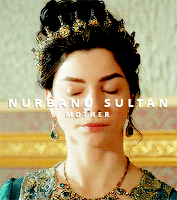

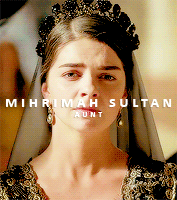
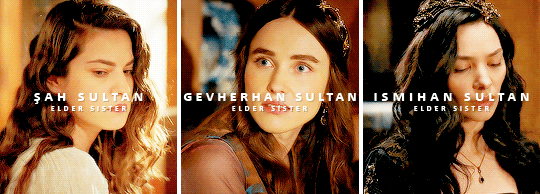
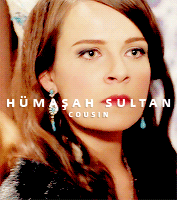

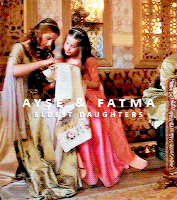

Murad III of the Ottoman Empire + the women in his life
#history#historyedit#ottoman history#murad iii#nurbanu sultan#safiye sultan#mihrimah sultan#sah sultan daughter of selim ii#ismihan sultan daughter of selim ii#gevherhan sultan daughter of selim ii#humasah sultan daughter of sehzade mehmed#ayse humasah hanimsultan#canfeda hatun#raziye hatun#semsiruhsar hatun#ayse sultan daughter of murad iii#fatma sultan daughter of murad iii#ottomanladiesedit#*womeninlife
715 notes
·
View notes
Note
Hi! I have a dumb question, I guess, but I've seen that Şah Sultan, daughter of Selim II, has her date of death given as 1577 in some sources and 1580 in others. Which one is true? Thank you!! :)
Şah Sultan died two weeks before her husband Zâl Mahmûd Paşa. According to Sakaoğlu, Stephen Gerlach said the princess’ funeral was on 3 November 1577.
Wikipedia states that Gerlach was in Istanbul from 1573 to 1578 so he couldn’t have witnessed Şah Sultan’s funeral if she had died in 1580. (I just hope wikipedia is right on this because I could not find anything else about him and unfortunately I can’t speak German)
So... I guess she actually died in 1577?
For some reason Öztuna claims that at least two - maybe three - daughters of Selim II died in September 1580 but that seems to me too big of a coincidence for that to be true (also, Gevherhan did not die in 1580 because she was alive when Ahmed I ascended the throne). Öztuna was very detailed in his works but unfortunately they’re also a little dated now so his information sometimes is wrong.
7 notes
·
View notes
Photo

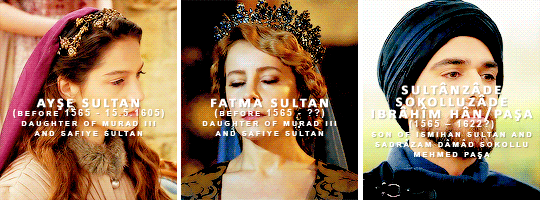






Nurbanu Sultan + known grandchildren
#history#historyedit#ottoman history#nurbanu sultan#ismihan sultan daughter of selim ii#gevherhan sultan daughter of selim ii#sah sultan daughter of selim ii#murad iii#mehmed iii#safiye sultan#ayse sultan daughter of murad iii#fatma sultan daughter of murad iii
883 notes
·
View notes
Photo


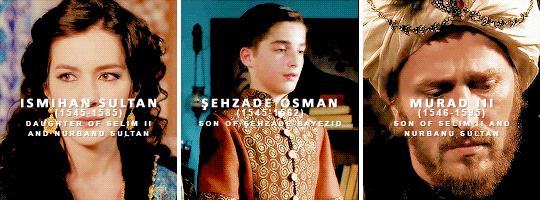
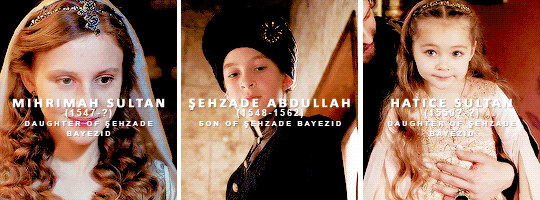

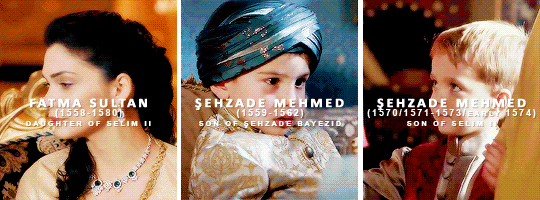

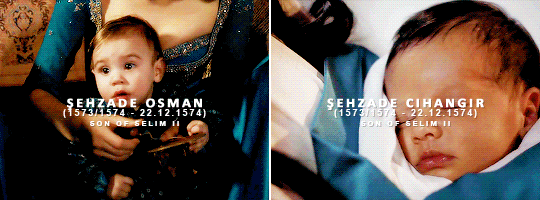
Hürrem Sultan + known grandchildren
#history#historyedit#ottoman history#ottomanladiesedit#ayse humasah hanimsultan#sultanzade osman bey son of mihrimah sultan#humasah sultan daughter of sehzade mehmed#sah sultan daughter of selim ii#ismihan sultan daughter of selim ii#gevherhan sultan daughter of selim ii#fatma sultan daughter of selim ii#mihrimah sultan daughter of sehzade bayezid#ayse sultan daughter of sehzade bayezid#hanzade sultan daughter of sehzade bayezid#hatice sultan daughter of sehzade bayezid#murad iii#long post
1K notes
·
View notes
Photo



On this day, 3 November 1577, in Ottoman history, Şah Sultan died:
Possibly Selim II and Nurbanu Sultan’s eldest daughter, Şah Sultan was married twice during her life: firstly to Dâmâd Çakırcıbaşı Hasan Paşa, and secondly to Dâmâd Zâl Mahmûd Paşa, apparently a love match. It is usually said that Şah and her second husband Mahmûd Paşa died on the same day but it is not true: there were actually 12 days between the princess’ death and her husband’s. Both were buried in the mosque they had built together, the Zal Mahmud Paşa Camii. Stephan Gerlach, in his Tagebuch, described her funeral:
"Today (3 November 1577) at 12 o'clock we witnessed the funeral of Mahmud Paşa's wife, daughter of Sultan Selim. It was a modest ceremony. [...] There was a crowd on either side of and behind the coffin. (Sokollu) Mehmed Paşa was first, the Chief Judge of Rumelia next to him. Behind them were Mustafa Paşa, Ahmed Paşa, Sinan Paşa, the Chief Judge of Anatolia, the governor of Rumelia and the Commander of the Janissaries, all docked in black clothes and riding horses. The Janissaries had replaced their usual headdresses with turbans."
#history#historyedit#ottoman history#on this day in ottoman history#on this day in history#sah sultan daughter of selim ii#ottomanladiesedit
409 notes
·
View notes